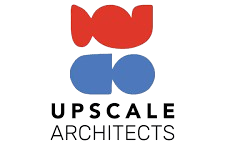What Proptech Real Estate Tools Are Getting Right and Where the Gaps Still Are
Proptech has had its cycles. In the early 2010s, it was about lead gen. By the late 2010s, it shifted to access control, IoT retrofits, and CRM overlays. And then, somewhere in the pandemic-era scramble for “digital transformation,” the term itself started to blur.
But in 2025, proptech real estate isn’t about experimentation anymore. It’s infrastructure. And for operators—especially in leasing, design-build, and development—the distinction is now simple: which tools actually reduce cycles, and which add more noise.
We’re seeing the dust settle, and a few clear patterns emerge.

1. Workflow-Embedded Tools Are Outperforming Standalone Dashboards
The best proptech solutions today don’t ask teams to log into another platform—they embed directly into the day-to-day workflow.
For example: instead of exporting floor plans and emailing PDFs to clients, teams using tools like qbiq generate layouts, 3D tours, and pricing breakdowns directly from a browser-based interface, automated from input to output. It's not a new tool to learn. It’s the front end of the leasing funnel, now streamlined.
This approach mirrors what platforms like Capably are pushing, tools that automate routine work and integrate seamlessly into legacy operations.
2. Visual Enablement Is Becoming the Default Client Expectation
When clients make decisions, they don’t just want data. They want clarity. The most useful proptech real estate tools help tenants, landlords, and developers see outcomes—not imagine them.
Whether it’s virtual walkthroughs, side-by-side layout comparisons, or AI-generated test fits, the tools making the biggest impact are the ones that make abstract options tangible. And they do it within hours.
3. The Shift from One-Off Deliverables to Repeatable Systems
A pattern we’re seeing across high-performing teams: they’re replacing custom, one-off design and visualization workflows with repeatable, scalable systems.
Where renderings and fit-outs used to be slow, bespoke tasks, they're now produced via rules-based automation—often fed by templates, branding standards, and program logic. Tools like qbiq enable automatic creation of space planning, rendered tours, and quantity takeoffs and much more.
This lets developers explore more sites in parallel. Leasing teams respond faster. Architects focus on late-stage work, not endless test fits.
It’s not a UX win. It’s a throughput shift.

Where Gaps Still Exist
Despite progress, proptech real estate still has blind spots. A few worth calling out:
- Disconnected systems: Tools that don’t talk to each other force teams into export/import purgatory.
- Overpromised AI: Buzzwords without task-level automation are distractions, not solutions.
- Poor onboarding: If a tool takes weeks to implement or adds workflow friction, it dies in the field.
The next wave of adoption will be led by tools that respect operational gravity—solving real problems without trying to reinvent the wheel.
Final Thought
Proptech solutions shouldn’t be about futurism. They should be about utility. The most impactful platforms in 2025 aren’t the flashiest—they’re the ones cutting steps, accelerating clarity, and unlocking scale.
And for the firms leaning into that—less friction, fewer bottlenecks, and faster decisions are no longer theoretical. They’re operational advantages.







.png)









